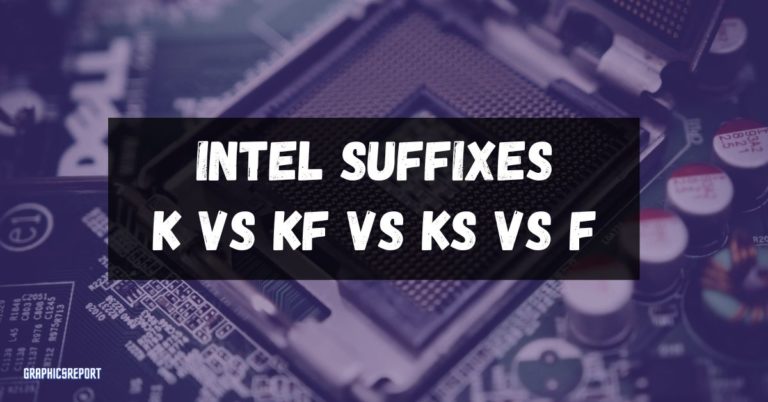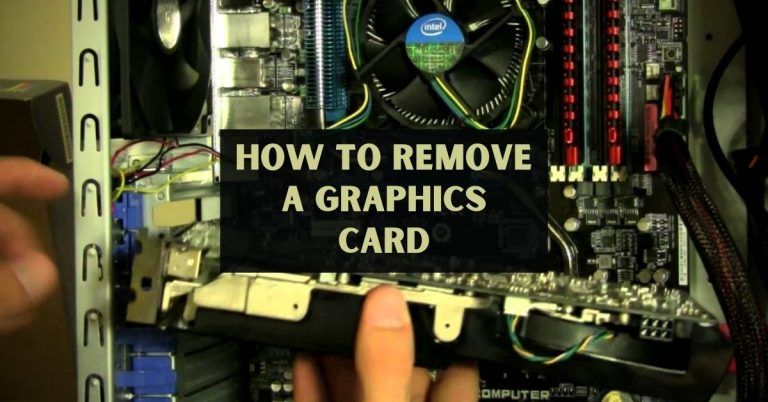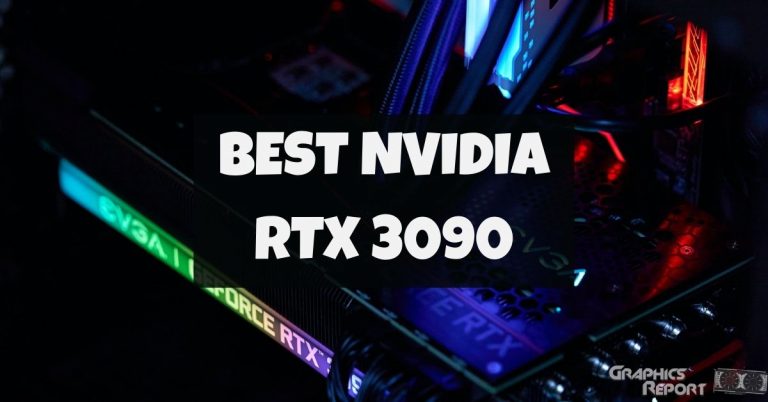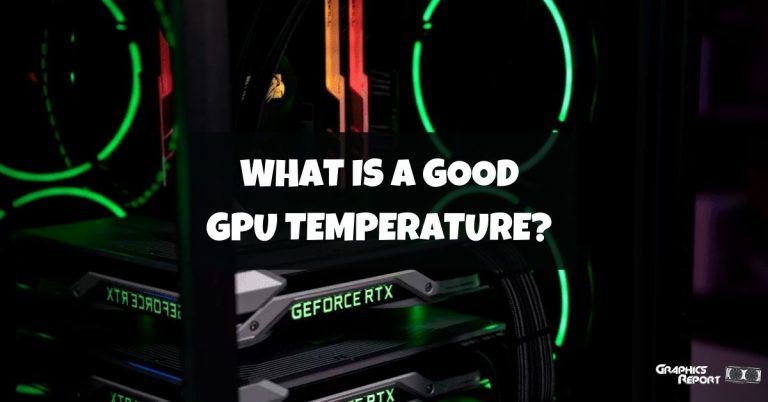
If you’re an avid PC gamer, then you may have come across a few terms ending in the word sync, like VSync, GSync, and FreeSync. All of these try to tackle the same fundamental problem; the way to do so is what’s different.
In the world of high FPS gaming, most people don’t have high refresh rate displays to go along with that. People are playing games like The Witcher 3 on 100FPS but only have a 60Hz display that cannot take full advantage of all those extra frames.
When you have a screen that has a mismatched frame rate and refresh rate, then you can encounter many problems that will ruin your gaming experience and drive you away from the immersion that you had in the game world. The biggest issues that can occur are screen tearing and screen stuttering.
Screen tearing happens when the frame rate of your game does not match with the refresh rate of your monitor. This ends up starving the GPU, or the monitor and frames are then displayed incorrectly.
If the frame rate is higher than the monitor can handle, then multiple frames will occur as one frame, and the same will happen if the frame rate is lower. FreeSync is the solution to this problem. So let’s take a deep dive into AMD’s remedy to this common yet frustrating issue.
Understanding The Technicality Behind AMD FreeSync.
It was developed as an answer to NVIDIA’s G-Sync in 2014. G-Sync in of itself is a type of adaptive sync technology which is also a derivative of the VSync technology.
All of these technologies want to achieve a similar goal, and that is to try reducing screen tearing and screen stuttering as much as possible and do so without adding any additional inconveniences into the mix.
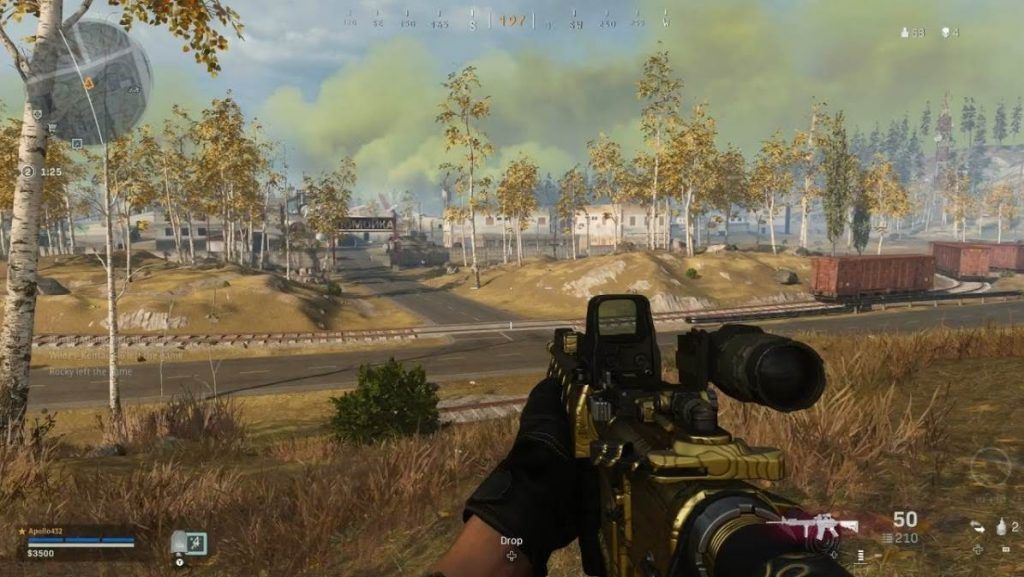
To really understand this tech, you’d have to understand why it’s needed. So, let’s begin. Your GPU is responsible for showing you what you see on your screen; it does so by rendering “frames” and then painting them on your screen from top to bottom, left to right.
The CPU does all the logical work beforehand and sends the final data to the graphics processor so it can render that data into frames. (The relation between the CPU and GPU is that of brains and brawns, respectively.) Before sending those frames to the monitor, they are sent and then temporarily stored in the “frame buffer” which is located in the VRAM of your video card.
This frame buffer is a middleman between the GPU and the monitor; it stores the frame before it’s ready to be sent to the monitor when the monitor is actually ready to receive it.
Screen tearing happens when either the monitor is not yet ready to receive the next frame or has been ready, but the GPU isn’t churning out frames fast enough.
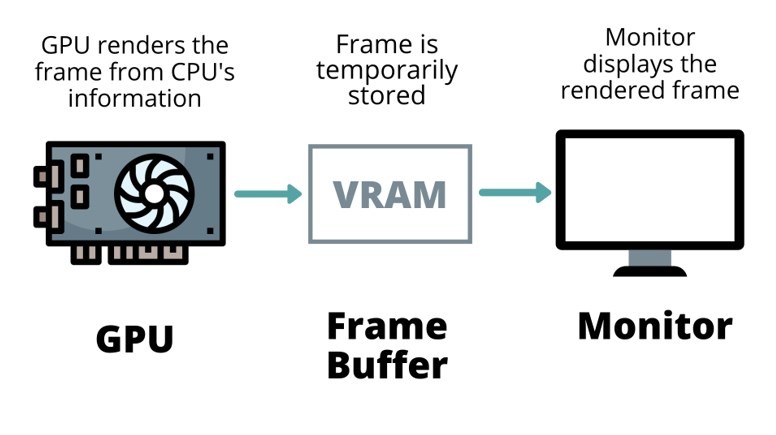
This rate at which the monitor can actually receive and show the frames is known as “refresh rate”. If a monitor is rated at 60Hz, that means that it can refresh 60 times in a second and can receive new frames 60 times in a single second.
And the refresh rate of a monitor is a fixed value that cannot change, unlike the frame rate, which can change and does fluctuate all the time.
Now, imagine this: you’re playing Fortnite and getting 100FPS, but your monitor is only 60Hz, so it can only refresh 60 times every second and thus can only handle 60 frames at a time and not 100 so when you force it to display 100FPS it won’t be able to bear that load and start to show incomplete frames that are out of sync.
Before the previous frame is shown completely on the screen, the next frame is already in the buffer and is then pushed along to be shown on the screen, so you get a mixture of 2 frames that do not align vertically and are out of sync with each other.
This phenomenon is known as “screen tearing”. This also occurs when the frame rate is lower than the refresh rate since this time around, the monitor is waiting for the frames, but the GPU is not producing enough of them, so you see literally two unfinished frames stitched together on your screen.
The solution to this is VSync or “Vertical Synchronization”. But VSync only solves one part of the problem, and that is when the FPS is exceedingly high, it will cap the FPS to match the refresh rate. But this introduces input lag because you’re essentially just forcing the frames to be capped.
In turn, if you press a key to do any action and it gets registered instantly, the frame that actually shows that action happening in-game is delayed because the FPS is capped. This is especially noticeable in online and competitive games where response times are key and input delay is unacceptable.
Another issue with VSync is that it does not account for frame drops. If you enter a graphically demanding area in your game that stresses the GPU, making it fall from 100FPS to just 50, then VSync will turn it down even more by 50%.
So instead of those 50 FPS, you’re only getting 25. This happens because VSync thinks that the video card is unable to keep up with the monitor and is getting stressed too much.

In turn, you experience “screen stuttering”. Screen stuttering is basically just screen tearing but worse since this time around, you’re devoid of frames instead of being drowned in them.
Hence, the monitor keeps demanding frames that can match the refresh rate, but since the GPU cannot match that demand just yet, you see repetitions of frames and incomplete, unfinished frames being pushed out without being fully rendered.
So, to solve these problems, a new technology was developed known as “Adaptive-Sync” which acted like a smart toggle for VSync, turning it on when the frames were high, and as soon as they dropped below the monitor’s demands, VSync would get turned off.
This solved many problems that came with VSync, but we still weren’t fully there yet in terms of smoothness, stability and consistency. Enter Variable Refresh Rate (VRR). Adaptive Sync enabled VRR monitors could dynamically adjust and adapt their refresh rate to whatever the frame rate of the game was.
This completely changed the game since now refresh rate became an unlocked value that could fluctuate just like the frame rate. Quickly, NVIDIA built upon this tech and introduced their GSync technology and then the next year, AMD followed with FreeSync.
How Exactly Does FreeSync Work?
AMD FreeSync builds upon VESA’s Adaptive Sync standard of VRR displays. What this means is that it is not really a proprietary technology but an open-source one.
Anyone can make a display capable of VRR by using VESA’s adaptive Sync standard, and it then has to go through a rigorous certification process conducted by AMD, which then allows the monitor to be FreeSync compatible.
Every monitor has a scaler chip and board inside of it. That scaler acts like the brain of the monitor and controls it by taking care of all the processing, decoding the image input, rendering the image, controlling the backlight, and you get the idea.
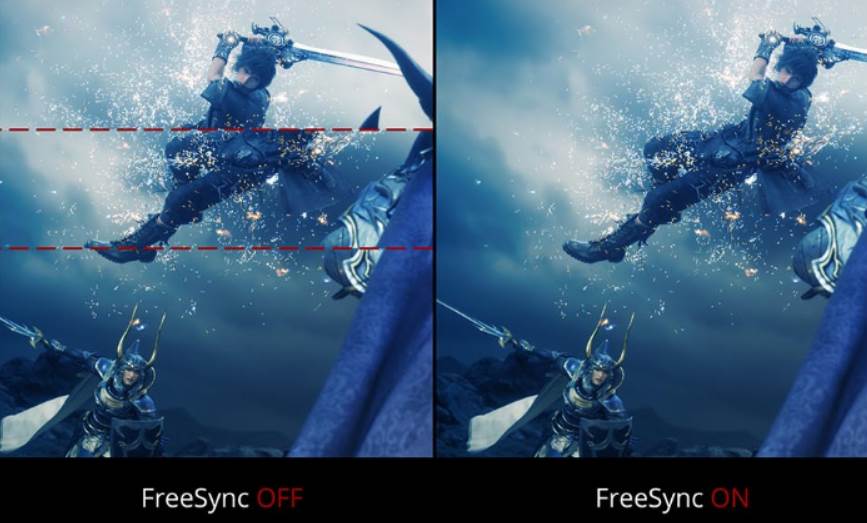
FreeSync is essentially a software-based solution that allows AMD Radeon cards to communicate with the scaler present onboard the displays. This way, it can sync the refresh rate of the monitor to the frame rate that the GPU is outputting.
FreeSync monitors come with a specified VRR range meaning that they aren’t entirely adaptive down to the lowest refresh rate possible. Most FreeSync monitors can only go as low as 48Hz in minimum VRR range, while some are as good as GSync monitors and can go down to 30Hz, but those are quite rare.
For example, a 75Hz display will come with a 48-75Hz VRR range, while a 144Hz monitor will come with a 48-144Hz VRR range. This tech can only operate in these ranges. If your frame rate exceeds that of the monitor, then FreeSync will cap the frame rate, and as soon as it falls, it will dynamically try to match it.
So what happens when the monitor’s frame rate falls below its VRR range minimum, that is 48Hz. It will simply multiply the frame rate by duplicating frames to match the VRR range; this feature is called Low Framerate Compensation (LFC).
For instance, if you have a 144Hz monitor and the FPS drops down to 40, LFC will duplicate the frames three times, as in 40 x 3, so you’d get 120FPS on a 144Hz display now, which FreeSync will then dynamically sync to provide a smooth experience.
Unlike GSync, FreeSync is software-based, not hardware-based and does not require a specific module to be put inside the monitor. Instead, any VESA Adaptive-Sync standard scaler can qualify for AMD’s FreeSync compatibility, and that’s why these monitors are also cheaper than GSync monitors. On top of that, like GSync is exclusive to only NVIDIA cards, this technology is also exclusive to only AMD cards.
AMD FreeSync Features
We’ve already discussed how it works and what it really is, so now let’s shift gears and focus on its features. FreeSync’s biggest selling point is that it eliminates screen tearing and also screen stuttering via VRR.
On top of that, it also reduces screen lag and any artifacts related to out of sync gaming. It does all this at a relatively cheap cost since it’s a software-based remedy and doesn’t require proprietary hardware (except for a Radeon GPU, obviously).
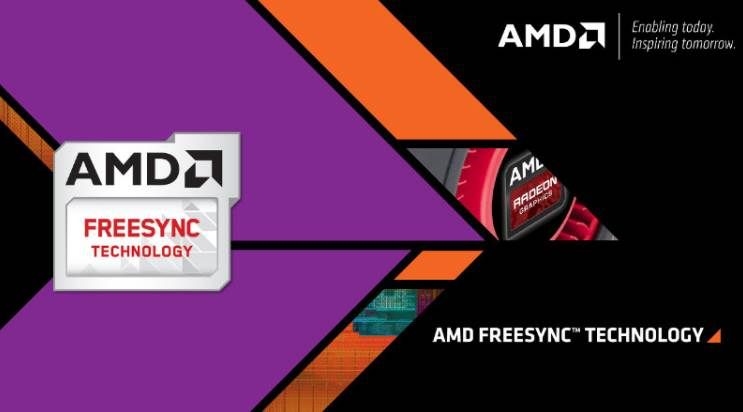
It’s miles better than VSync and does essentially what GSync achieves but at a lower price. Plus, there is a lot more variety of FreeSync monitors out there, too, more than the GSync compatible ones, so you can choose whichever one you prefer from a wide pool of options that best fit your feature set.
Pros.
It is cheaper and more affordable. There are also just more FreeSync monitors out there than GSync, and you can find one as cheap as $100 all the way up to thousands of dollars.
Starting from 2019, NVIDIA has actually allowed a few select FreeSync monitors to be GSync compatible, so now you can use your NVIDIA GPU and take advantage of GSync on a FreeSync monitor. It uses an open standard, so there is no license fee involved, and anyone can develop these displays.
FreeSync reduces and eradicates screen tearing and does so by using variable refresh rate to dynamically sync the refresh rate to the frame rate of the game. This also reduces screen stuttering and eliminates input delay, which can prove to be fatal in competitive games like Counter-Strike: Global Offensive.
Cons.
Being a software-based technology, the results that it produces, although great, can still not match that of GSync. GSync is a hardware-based solution, so it can reduce screen tearing and stuttering entirely, while AMD’s FreeSync can come very close but not completely remove these issues. It still produces great results, but they’re just not as good as its counterpart’s results.
As you could tell, this technology only works with AMD Radeon GPUs and not NVIDIA GPUs. So if you have an NVIDIA video card but a FreeSync monitor, then you cannot utilize this feature. However, a few FreeSync monitors are compatible with GSync and can be used with NVIDIA GPUs for GSync.
Suggested readings:
- Is g sync worth it
- What is AMD’s fidelity fx super-resolution
- Freesync vs g-sync
- What is crossfire
- What is g-sync ultimate
- Freesync vs freesync premium vs freesync premium pro
How Does It Improve Gaming?
FreeSync makes your game feel smoother and more consistent; at the same time, it provides stability to the experience, so if you ever run into FPS spikes, FreeSync will surely take care of that.
You will never break immersion from the game world and will always enjoy the game you’re playing instead of worrying about screen tearing and other issues. Let’s see how it can really help you improve your gaming experience.
Screen Lagging
Screen Lagging is similar to input delay. Because there are so many frames being thrown at a 60Hz monitor at the same time, more so that it can handle, you will start to see incomplete messes of unsynced frames.
Here, you will also start to encounter latency that can go as high as 68ms which is equal to skipping 3-4 frames on a 60Hz display. This is obviously terrible as the input gets registered instantly, but you don’t see it actually happening on screen before a perceptible delay. AMD FreeSync helps with this by utilizing VRR.
Screen Stuttering
When the frame rate falls below the refresh rate of your screen, you will face stuttering. It happens because the screen is ready for a refresh, but the GPU is not able to generate frames fast enough, which ends up in unfinished frames being sent to the frame buffer, so what you see on your screen are two 50% rendered frames combined into one full frame that looks horrible and is completely out of sync.

This technology reduces screen tearing by constantly adapting the refresh rate to match the frame rate, and if the FPS falls below the VRR range, then FreeSync uses LFC to duplicate frames and provide a smooth gaming experience that lacks stutters in your game.
Screen Tearing
This is the main thing that FreeSync tries to solve. Tears happen on your screen when the frame rate exceeds the monitor’s maximum capabilities. Your GPU produces frames faster than your screen can show at a time which leads to you seeing out-of-sync frames in one single frame.
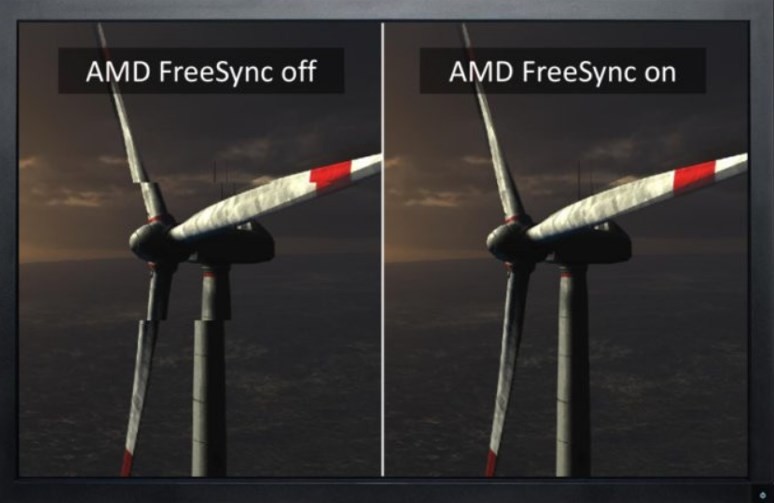
A new frame is shown before the previous one is even fully shown on the screen, and this happens because the frame buffer is just receiving so many frames and sending them to the monitor before it’s ready for a refresh.
FreeSync makes use of the Variable Refresh Rate tech to tackle this issue. This provides very smooth results and, in the end, eliminates almost all screen tearing you see in video games.
How To Enable AMD’s FreeSync?
It’s straightforward to enable it on your PC. All you need is a FreeSync compatible monitor, a Radeon GPU, and the latest AMD Radeon Catalyst drivers. You can download them manually from AMD’s website or use their auto-detection tool to download the appropriate latest drivers on your system.
Monitor Configuration
Please ensure that the AMD FreeSync capable monitor has been properly configured. Using the On-Screen Display (OSD) controls on the monitor, verify that:
- AMD FreeSync is enabled
- Anti-Blur is disabled
- DisplayPort is set to 1.2 or higher
- Since not all of these settings may be available or may be described differently depending on the make and model of the monitor, please refer to the monitor’s user manual.
Note: To take advantage of the full capabilities of the monitor, installing the latest monitor driver provided by the manufacturer may be required.
- Right-click on Desktop.
- Select the “AMD Radeon Settings” option and open it.
- Click on the gear icon in the top right corner.
- Navigate to the “Display” tab from the top row.
- Make sure that the right display is selected if you have multiple displays connected.
- Here, you’ll see a bunch of options, and amongst them, you’ll see a toggle saying “Radeon FreeSync”. This will be the first thing located under “Display Options”.
- Simply turn on this toggle, apply the settings, and that’s it! FreeSync is now enabled on your display.
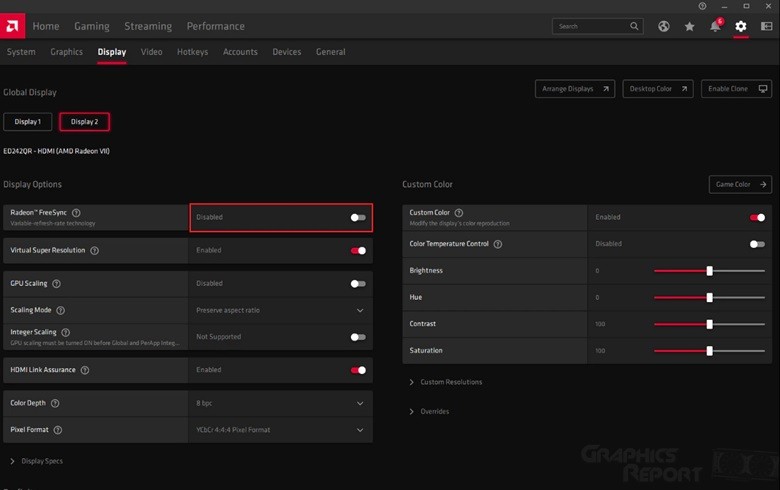
If you want to enable FreeSync on a per-game basis, then follow these steps:
- Right-click on Desktop.
- Select the “AMD Radeon Settings” option and open it.
- Navigate to the “Gaming” tab from the top row.
- Select the game you want in which you want to turn this feature on.
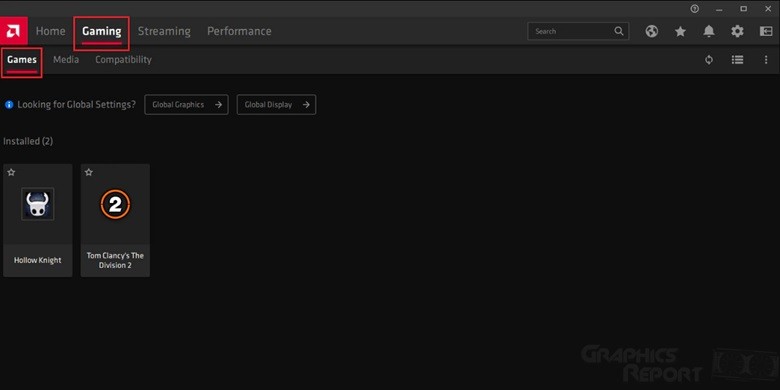
- Here you’ll see the option to turn FreeSync on/off under the Display options. Enable it by selecting “on”, apply the settings, and you’re good to go.
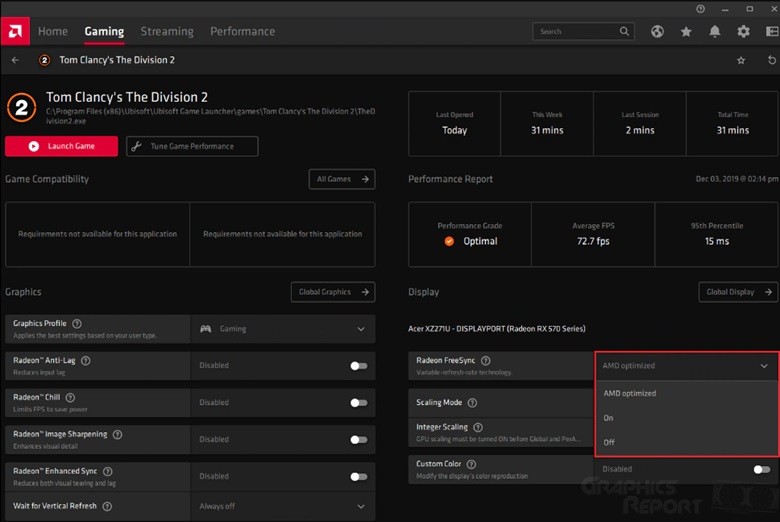
What Is FreeSync Premium And FreeSync 2 HDR?
FreeSync Premium and FreeSync 2 HDR are enhancements built on top of the original groundwork laid by the vanilla FreeSync. While it was great as is, AMD stepped in to make it even better by adding new features and making sure that certain features are present in the monitor, making them a must to receive the new FreeSync Premium and FreeSync HDR 2 certifications.
FreeSync Premium was announced at CES 2020, and it is an upgrades version of the normal tech. AMD FreeSync Premium technology adds to the baseline FreeSync technology tier and equips serious gamers with a fluid, tear-free gameplay experience at peak performance.
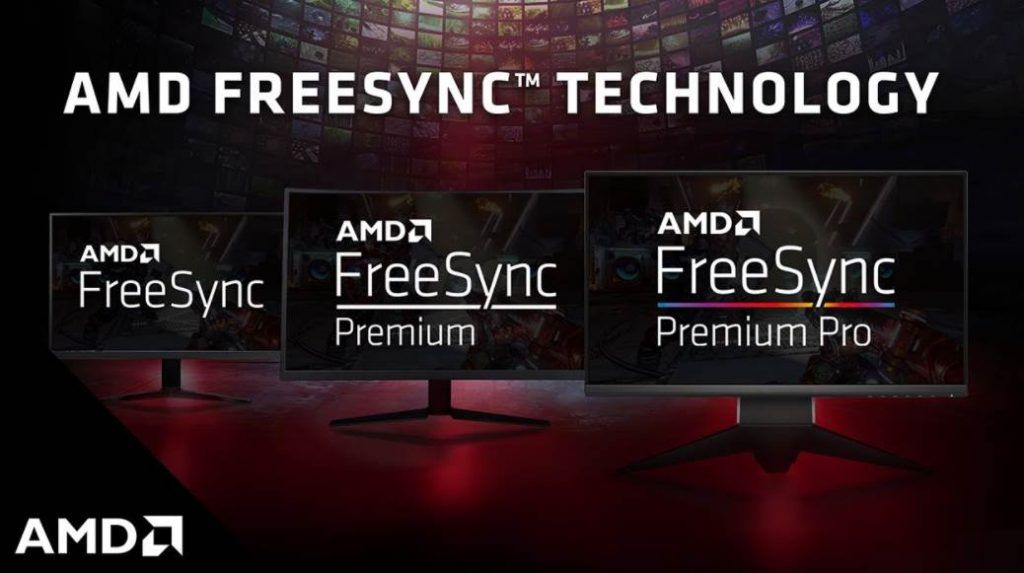
All FreeSync Premium monitors must support at least 120Hz at a minimum resolution of 1920 x 1080 and offer the same great features that the normal tech already does. LFC was also added in to be necessary for these displays as LFC is crucial in making the monitor utilize the full potential of FreeSync.
FreeSync 2 HDR is AMD’s lineup of top-tier FreeSync displays. At CES 2020, it was rebranded to “FreeSync Premium Pro” to better align with the mid-tier option.
AMD FreeSync Premium Pro technology raises the bar to the next level for gaming displays, enabling an exceptional user experience when playing HDR games, movies, and other content. Premium Pro adds in support for HDR content and games that can take advantage of HDR visuals.
On top of this, Premium Pro displays are required to support low latency gaming at both SDR and HDR modes, and they also need to pass a rigorous testing process in which they are tested for achieving 400 nits of brightness in highly accurate luminance and wide-color gamut testing; this is the only way they can be certified as being a Premium Pro display.
Thus, FreeSync Premium Pro monitors are costly, and since they all are required to support HDR, you will not find a cheaper option that doesn’t have HDR.
The End Of The Line:
It is a great technology that can help you cut down on screen tearing, screen stuttering, and screen lagging issues.
It’s fundamentally better than VSync because it’s dynamic, and via VRR, it can adapt to the FPS of your game. It also reduces input delay, so playing online competitively is made plausible with FreeSync.
In the end, you have to ask yourself – can you live with screen tearing? If yes, then none of the synchronization technologies will ever be of any worth to you. If you’re playing professionally, then you’d prefer having the best performance over the best visuals, so it will not be worth it for you.
It’s definitely worth it for those who are looking to play games at higher frame rates without coming across screen tearing but don’t have the money to spend thousands of dollars on a new display, and since FreeSync monitors come quite cheap, it’s a great option.
Stick to GSync if you have an NVIDIA graphics processor, and Lastly, if you already have an AMD video card, then investing in a FreeSync monitor would be the next best option, other than a Ryzen CPU, of course.
If you want the simple answer, then YES, FreeSync is worth it since it allows you to dynamically play at the same refresh rate as your FPS.

